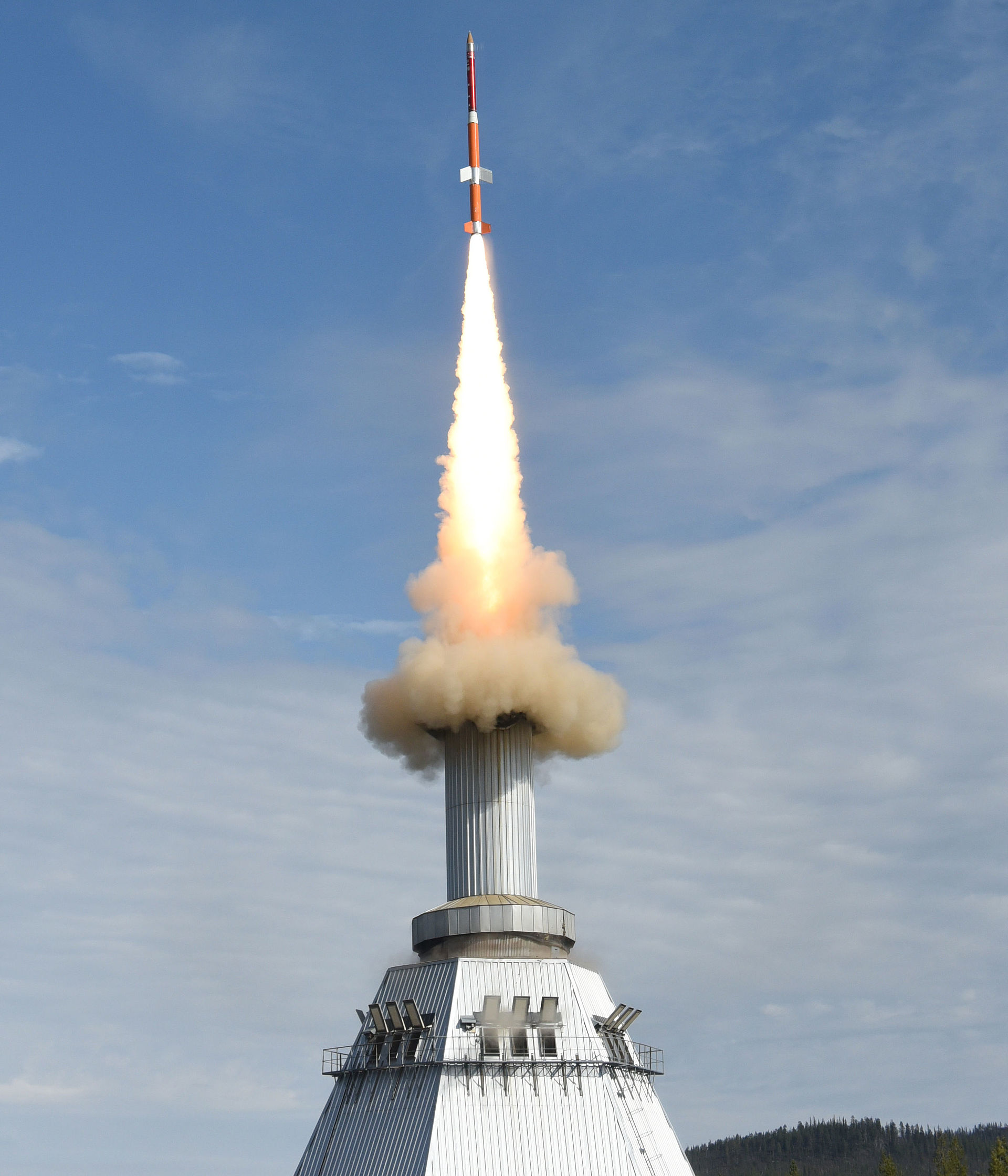
In the morning of May 13, 2018, an unmanned TEXUS rocket completed its mission in the skies above Northern Sweden. After lifting from the European launch pad ESRANGE near Kiruna at 10:30 a.m. local time, it reached an altitude of 239 kilometers. Weightless conditions arose on board for six minutes due to the parabolic flight. TEXUS missions use this period to perform various scientific experiments and for technology testing under space-like conditions. Once again, OHB System AG, a subsidiary of listed space and technology group OHB SE, played a crucial role in the success of the mission by making important contributions both in advance and at the launch site.
OHB involved since the inception of the program
“As with all previous TEXUS missions, we were again responsible for integrating the experiments on board the research rocket and for the service systems. These include a service module with telemetrics, telecommand, TV image transmission, payload movement control and µg measurement units as well as a recovery system,” explains Horst Pfeuffer, head of the TEXUS project at OHB System AG. “At the ground control center, we track the current trajectory by means of on-board GPS receivers. In this way, the experimenters are able to modify the parameters of their experiments during the free-flight phase via tele commands.”
Four national experiments contributed by universities and research institutions had been selected for this mission, including an optimized optical frequency comb for transmitting data at high speed. It was sent into space on board a TEXUS rocket for the third time and tested under weightless conditions.
“Once again, everything proceeded according to plan during this mission. Every team is different for my team and me as the requirements arising during the course of the mission or in connection with individual experiments may vary sharply. Obviously, we are just as tense as the scientists during the flight and do everything can to ensure that the mission is a scientific success,” says Horst Pfeuffer. “Some of the experiments we handle use this research flight to prepare for potential deployment on board the International Space Station ISS. Some of the experiments end up returning to TEXUS in modified form a few year later or we learn that they are now being used on board the ISS. In any case, we are thrilled when we are able to contribute our expertise and experience to validate an experiment for a “genuine” flight to space!”

The next TEXUS mission is just around the corner!
This year, a double TEXUS campaign has been scheduled for the launch pad in Northern Sweden to make use of synergistic benefits. This means that two TEXUS missions will be executed within the space of a few days. Things will be heating up again for Horst Pfeuffer and his team from OHB as well as all the other participants and scientists at the launch pad on May 18, the date of the next TEXUS-55 mission.
TEXUS
Commenced in 1976, TEXUS is the German acronym for “Technological experiments in weightless conditions”. The initiator is DLR Space Administration. TEXUS-54 was executed on behalf of the German Aerospace Center (DLR) with funding provided by the German Federal Ministry of Economics and Energy. OHB performs the tasks in consultation with the DLR Mobile Rocket Base (MORABA) in a subcontract for Airbus Defence and Space, Bremen.
Contact for media representatives:
Marianne Radel
Head of Corporate Communications
Phone: +49 421 2020 9159
Email: marianne.radel@ohb.de
Contact for investors and analysts:
Marcel Dietz
Investor Relations
Phone: +49 421 2020 6426
Email: ir@ohb.de
